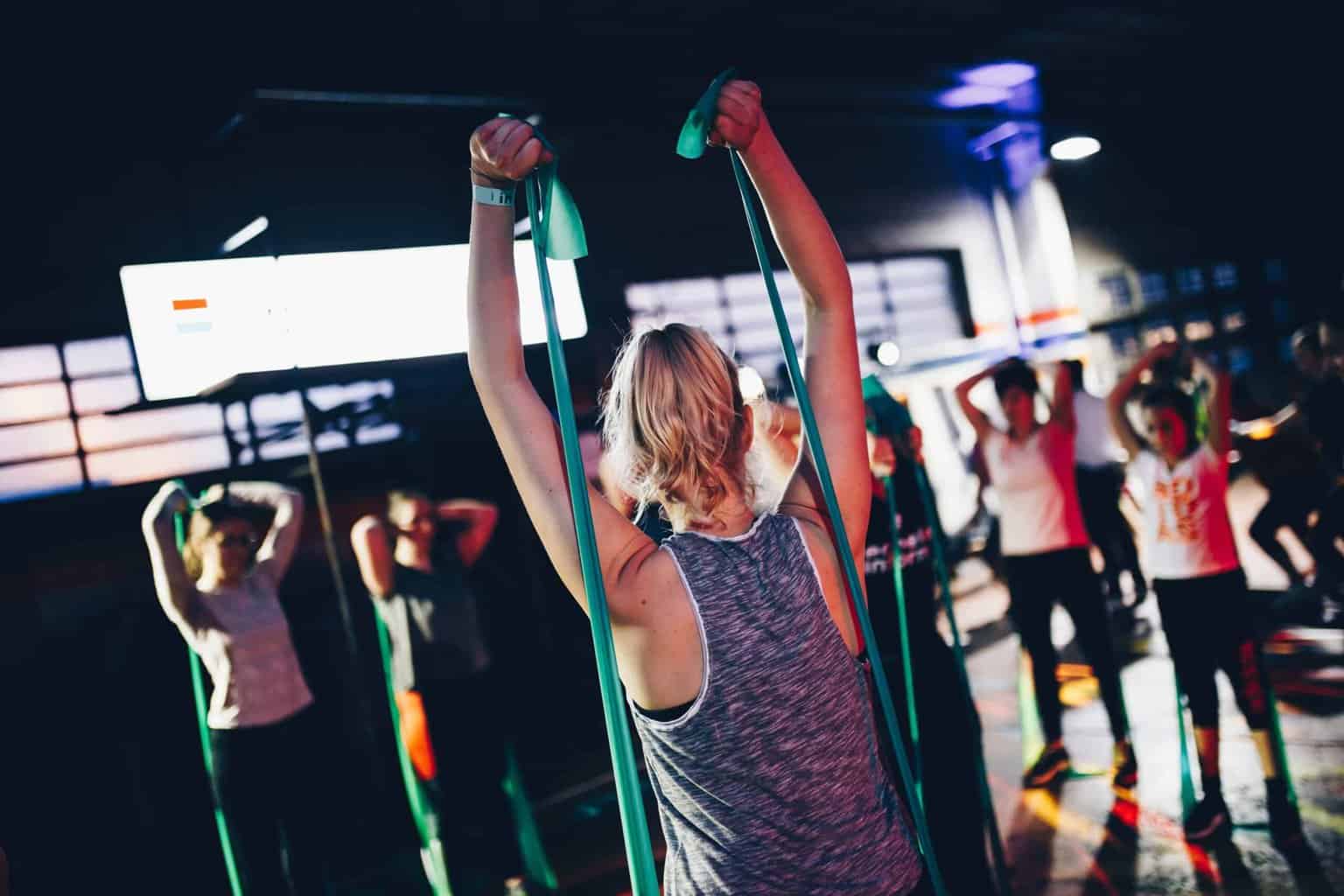HIIT and Pilates are the perfect combination

HIIT or High Intensity Interval Training has been a popular fitness trend in the last decade. It is based on high intensity exercises done at short intervals of rest, to tap into an anaerobic cardiac capacity which has many benefits. Originally made for athletes, today it is being adapted for the larger population for weight loss programs. However, HIIT is not suitable for some groups of people. Let’s look at the science, benefits, precautions and how by adding Pilates we can make HIIT safer and more effective for clients.
The Science of HIIT
According to the American College of Sports Medicine, high-intensity intervals are exercises that you typically perform at 80 to 95 percent of your maximum heart rate, for anywhere from five seconds to eight minutes. Generally, the shorter the interval, the higher the intensity and vice versa. The workout intervals are alternated with periods of complete rest or active recovery performed at 40 to 50 percent of your maximum heart rate. The ratio of the work to rest intervals can be altered based on the fitness level and goals of the person. A 2019 study by the Physiological Journal, compared the results from two-time interval ratios viz. 60/60 and 30/120 for six weeks on the participants. Those who performed the HIIT in the 1:1 ratio showed an increase in aerobic capacity. However, this doesn’t necessarily mean it is the best time interval ratio. If one is new to the exercise, longer rest periods will be required and then gradually as endurance increases, we can move on the 1:1. Elite athletes and long-time practitioners also go for 2:1 ratio of work to rest.
But what happens to your body with these short bursts of high-intensity exercises? The increased intensity of the workout forces your body to tap into its anaerobic system for energy because it can’t supply the oxygen required to work aerobically quickly enough. During the recovery intervals, your body returns to the aerobic system. Respiring anaerobically is the panting you experience after a heavy cardio session. It is the body’s effort to recover the oxygen deficit, as is more pronounced with HIIT than continuous exercise.
Benefits of HIIT
The biggest benefit of HIIT is the post-exercise burn of 6 to 15 percent more calories, as your body replenishes itself. The lactic acid and hydrogen ions produced during anaerobic respiration must be cleared, along with the hormones such as adrenaline. The heart rate and body temperature also need to be brought down and this leads to the further burning of calories post-workout. It can be great when dealing with insulin sensitivity as it forces the body to use fat stores to generate energy efficiently.
It is a quick workout which has lasting effects in a shorter duration of time, thus it is suitable for those with an extremely busy schedule. A workout can last up to an hour, but it can also be completed in 20 minutes or less. Tabata, designed by Dr. Izumi Tabata, is one of the most well-known HIIT protocols and it consists of 20 seconds of work followed by 10 seconds of rest, repeated eight times for a total of just four minutes, not counting the warm-up and cool-down.
HIIT improves VO2 max, which is the uppermost rate at which your body can utilise oxygen for energy during exercise. HIIT boosts the anaerobic capacity – the body’s ability to produce energy without oxygen, used for short bursts of hard effort by over 25 per cent. It helps improve cardiorespiratory health and cholesterol profiles. Elite athletes are recommended to use this form of training at least once a week to build stamina and endurance.

Who cannot do HIIT?
Although it has a lot of benefits, HIIT also has some risks attached to it. Those who a history of coronary disease and are obese, should avoid HIIT in its popular format. Yes, HIIT can be modified for people with different fitness levels and can be done with different equipment and props as well. But certain high-risk population need to stay away from it.
It can also be detrimental for those who are new to exercising and do not have the basic strength and mobility to begin with. The study, which appears in the Journal of Sports Medicine and Physical Fitness, acknowledged that while this type of training is effective in improving cardiorespiratory fitness, boosting energy, and promoting lean muscle mass and fat loss, it also increases injury risk. The most common injuries occur in the shoulder, ankle, knee and wrist joints.
It is crucial then that you do not do HIIT without the guidance of a trained instructor and before consulting your doctor.
HIIT and Pilates
Contrary to popular belief, the recovery period is more important to making the HIIT workout effective. If you don’t sleep well or don’t sufficiently replenish your glycogen after HIIT with good quality carb sources, you won’t be able to achieve a high-enough intensity in subsequent sessions. Our body takes longer to recover from these sudden bursts of high intensity movements than any other workouts. If you push yourself to do HIIT on two consecutive days, it can lead to muscle overuse, burn out and in general, be detrimental to your overall health. Thus, you shouldn’t be doing HIIT more than once or twice a week.
You need to offset HIIT with, 3 or 4 days of low to moderate intensity, strength and mobility workouts. And this is where Pilates comes in. With the focus on posture, alignment, and working from the core outwards, Pilates is the building blocks for movement. Pilates helps you connect with your body better, helping you recruit the right muscles, improving balance and making you move with ease. This strength, balanced musculature, and awareness that you develop then can flow into any other workout that you do and make those workouts more effective. This efficacy is a result of engaging from the core and making the body less prone to injuries. Pilates thus is the perfect yin to the yang of your HIIT workouts.
Moreover, we can do Pilates exercises in an HIIT format too. Soon we will be commencing similar classes as well. To get a glimpse of it, check the YouTube video below.
Ultimately, the aim of working out should never just be vanity. We need to be able to live with healthy bodies for our lifespan and be free from ailments as far as possible.
If you are looking to have a balanced and optimum workout routine, check out our class schedules and join Moushu’s Pilates.
Written with Aaliyah Kuvawala.
